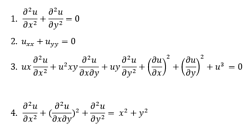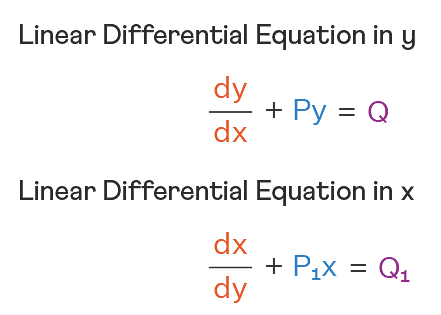In van der Wall equation
\([P=\frac{a}{V^2}[v-b]=RT;\)
P is pressure, V is volume, R is universal gas constant and T is temperature. The ratio of constants a/b is dimensionally equal to:
In van der Wall equation
\([P=\frac{a}{V^2}[v-b]=RT;\)
P is pressure, V is volume, R is universal gas constant and T is temperature. The ratio of constants a/b is dimensionally equal to:
- \(\frac{P}{V}\)
- \(\frac{V}{P}\)
- PV
- PV3
The Correct Option is C
Solution and Explanation
The correct otpion is(C): PV
From the equation
[a] ≡ [PV2] [b] ≡ [V]
\(⇒[\frac{a}{b}]≡[PV]\)
Top Questions on Ideal gas equation
- What is the molar volume of an ideal gas at standard temperature and pressure (STP)?
- VITEEE - 2025
- Chemistry
- Ideal gas equation
- A gas occupies 2 liters at a pressure of 3 atm. What will be its volume when the pressure is reduced to 1.5 atm at constant temperature?
- AP EAPCET - 2025
- Chemistry
- Ideal gas equation
- A sample of gas occupies 10 L at 300 K and 2 atm. What will be its volume at 400 K and 1 atm?
- MHT CET - 2025
- Chemistry
- Ideal gas equation
- What is the ideal gas law equation?
- MHT CET - 2025
- Chemistry
- Ideal gas equation
- Which of the following gases is most likely to deviate from ideal gas behavior at high pressures and low temperatures?
- MHT CET - 2025
- Chemistry
- Ideal gas equation
Questions Asked in JEE Main exam
Let \( f : \mathbb{R} \to \mathbb{R} \) be a twice differentiable function such that \[ (\sin x \cos y)(f(2x + 2y) - f(2x - 2y)) = (\cos x \sin y)(f(2x + 2y) + f(2x - 2y)), \] for all \( x, y \in \mathbb{R}. \)
If \( f'(0) = \frac{1}{2} \), then the value of \( 24f''\left( \frac{5\pi}{3} \right) \) is:
- JEE Main - 2025
- Differential Calculus
- The number of points of discontinuity of the function $ f(x) = \left\lfloor \frac{x^2}{2} \right\rfloor - \left\lfloor \sqrt{x} \right\rfloor, \quad x \in [0, 4], $ where $ \left\lfloor \cdot \right\rfloor $ denotes the greatest integer function, is:
- JEE Main - 2025
- Functions
- A lens of focal length 20 cm in air is made of glass with a refractive index of 1.6. What is its focal length when it is immersed in a liquid of refractive index 1.8?
- JEE Main - 2025
- Wave optics
- Two charges \( 7 \, \mu C \) and \( -4 \, \mu C \) are placed at \( (-7 \, \text{cm}, 0, 0) \) and \( (7 \, \text{cm}, 0, 0) \) respectively. Given, \( \epsilon_0 = 8.85 \times 10^{-12} \, \text{C}^2 \text{N}^{-1} \text{m}^{-2} \), the electrostatic potential energy of the charge configuration is:
- JEE Main - 2025
- Electrostatics and Potential Energy
- The area of the region enclosed by the curves \( y = x^2 - 4x + 4 \) and \( y^2 = 16 - 8x \) is:
- JEE Main - 2025
- Area between Two Curves
Concepts Used:
Types of Differential Equations
There are various types of Differential Equation, such as:
Ordinary Differential Equations:
Ordinary Differential Equations is an equation that indicates the relation of having one independent variable x, and one dependent variable y, along with some of its other derivatives.
\(F(\frac{dy}{dt},y,t) = 0\)
Partial Differential Equations:
A partial differential equation is a type, in which the equation carries many unknown variables with their partial derivatives.

Linear Differential Equations:
It is the linear polynomial equation in which derivatives of different variables exist. Linear Partial Differential Equation derivatives are partial and function is dependent on the variable.

Homogeneous Differential Equations:
When the degree of f(x,y) and g(x,y) is the same, it is known to be a homogeneous differential equation.
\(\frac{dy}{dx} = \frac{a_1x + b_1y + c_1}{a_2x + b_2y + c_2}\)
Read More: Differential Equations